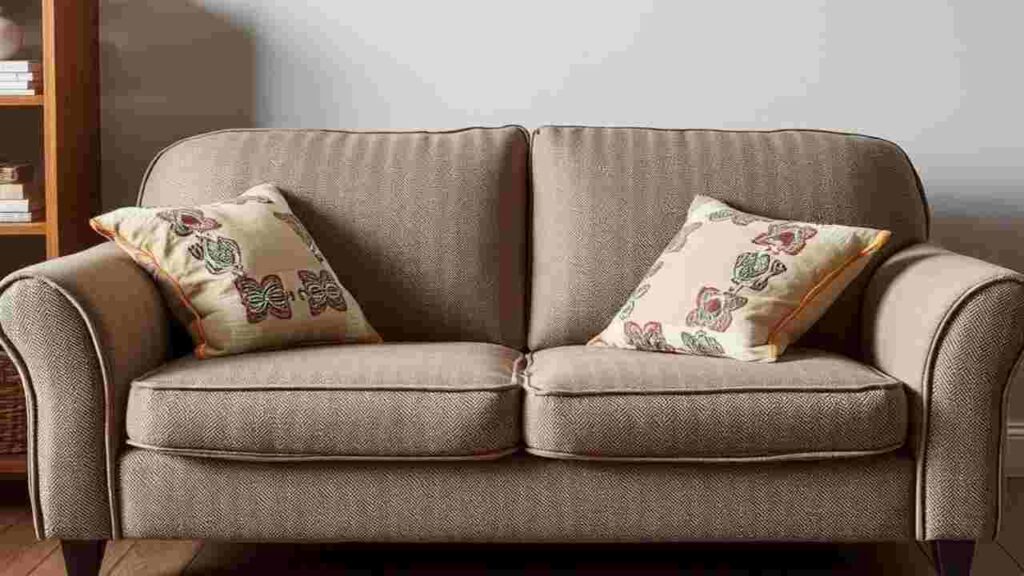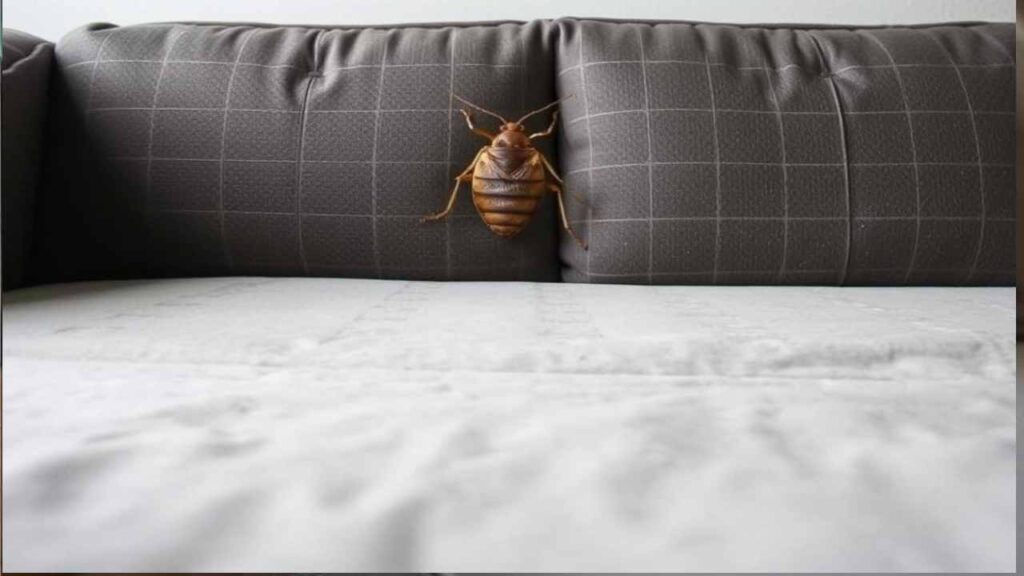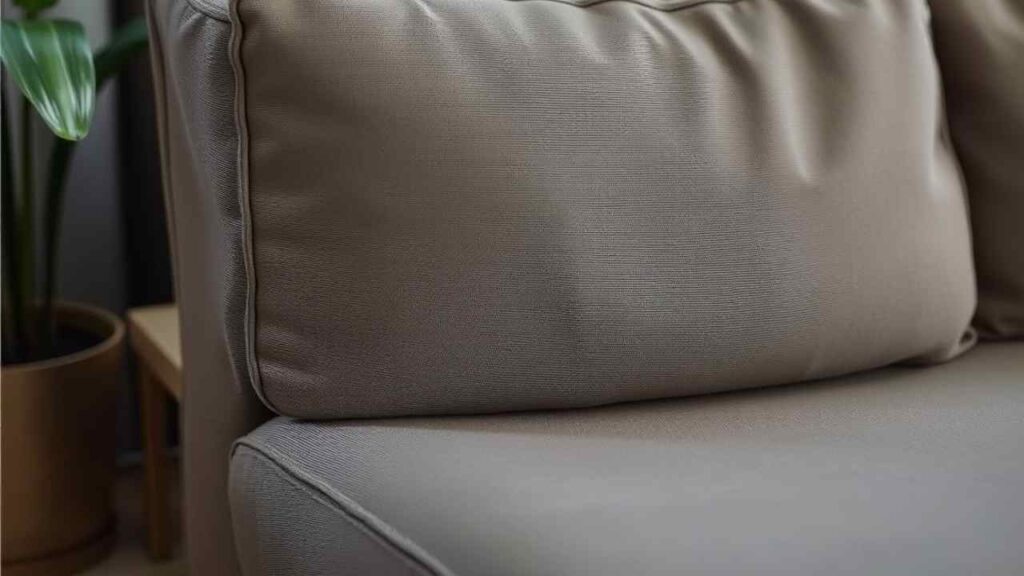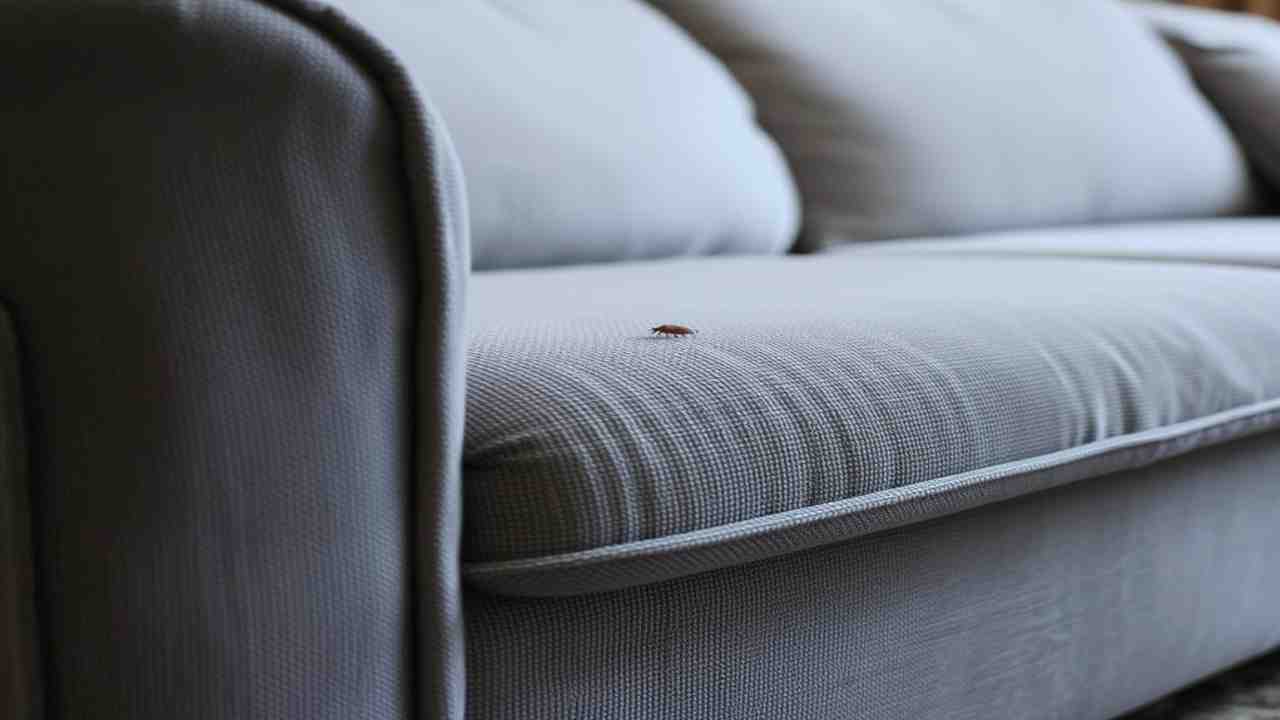Bed bugs are tiny, elusive pests that can easily find their way into your home and make a copy nest within your furniture, such as your couch. They can cause discomfort, sleepless nights, and even skin irritation. Identifying their presence early is crucial to preventing a full-blown infestation. In this guide, we’ll walk you through the steps you need to follow to throughly inspect your couch for signs of bed bugs, providing you with peace of mind and helping to maintain a comfortable living space.
Couch Creep Alert: 7 Ways to Spot Bed Bugs Fast!
Look for Physical Sign: Check the seams, cushion, and crevices of your couch for tiny, reddish-brown bugs. Bed bugs are about the size of an apple seed and can hide in the smallest corners.
Inspect for Shed Skins: As bed bugs grow, they shed their skins. These translucent exoskeletons are often left behind in areas where they congregate.

Identify Fecal Spots: Small, dark spots resembling ink stains are common sign of bed bug activity. These spots are their fecal matter and can be found on fabric surface.
Check for Eggs: Timy, white, oval-shaped eggs are often found in hidden crevices. These can be difficult to spot due to their small size.
Notice a Musty Odor: A strong, musty smell can indication. This smell is often compared to the scent of coriander.
Detect Unusual Bites: If you notice red, itchy welts on your skin, especially in a line, it may indicate that bed bugs are in your couch.
Use a Flashlight and Magnifyind Glass: Bed bugs are experts at hiding. A flashin and a magnifying glass can help you spot them in darker areas and folds of fabric that may otherwise go unnoticed.
Identifying these signs early can help you take swift action to manage and eradicate bed bugs, ensuring your home remains a comfortable and pest-free environment.
Don’t Let Bed Bugs Ruin Your Couch: Essential Checking Tips!
Stay Vigilant: Regularly inspect your couch even if it has not shown signs of infestation. Bed bugs can linger unnoticed for periods, so a regular check schedule can help catch them early.
Vacuum Thoroughly and Frequently: Use a vacuum cleaner with a hose attachment to reach into every nook and cranny of your couch. Dispose of the vacuum bag immediately after use to prevent any potential spread.
Utilize Protective Covers: Consider using encasements protective covers to deter bed bugs. These can prevent bed bugs from embedding themselves in your couch and help ensure cleanliness.
Declutter the Surroundings: Keeping the area around your couch free from clutter can help reduce hiding spaces for bed bugs and make inspections more manageable.
Spot-Treat with Heat: If you suspect bed bugs, apply heat treatments to infested areas since high temperatures can kill bed bugs effectively. Be cautious to follow safety instructions when using heat.
Raise Couch Legs if Possible: This can make it more challenging for bed bugs to migrate to the couch. Additionally, placing interceptors under couch legs can trap bed bugs trying to climb up.
By incorporating these proactive measures into your routine, you can significantly reduce the risk of bed bug infestations and protect the comfort and integrity of your couch.
Is Your Couch Infested? Discover the Signs of Bed Bugs!
If you’ve take all the preventative steps and still suspect that your couch might be harboring bed bugs, it’s essential to understand the signs of an active infestation. Here are some indicators that could confirm your suspicions:

Unexpected Blood Stains: You might find minor blood stains on your couch’s fabric. These can occur from accidentally crushing the bugs after they have fed.
Clusters of Bites: Bed bug bites often apperar in clusters or lines and can cause red, itchy welts. If you notice these patterns after spending time on your couch, it could strongly indicate an infestation.
Dark Stains on the Couch: Besides fecal spots, large dark stains from bed bug excrement may be more prominent in heavier infestations. These should be noticed as signal a significant bed bug activity.
Continuous Musty Odor: A persistent musty odor in the room or around the couch, which doesn’t go away with regular cleaning, might suggest an established bed bug presence.
Actual Bed Bug Sightings: Finding live bed bugs during your inspection indicates an infestation. Even one sighting should prompt further examination and immediate action. Taking immediate action is crucial to prevent further spread. If any of these signs are present, Engaging professional pest control services can ensure an effective and through procedure for eliminating bed bugs from your couch and home.
Bed Bug Hunt: How to Check Your Like a Pro!
Embarking on a thorough bed bug inspection requires keen attention to detail and the right tools. Here’s how you can check your couch like a seasoned professional:
Gather Your Tools: Arm yourself with a flashlight, a magnifying glass, gloves, and a small mirror. These tools will help yourspot bed bugs and their signs effectively, especially in hard-to-reach areas.
Begin at the Seams: Start your inspection by examining the seams and stitching of your couch. Bed bugs often hide here due to the tight spaces and proximity to human hosts. Inspect Underneath and Behind Carefully lift the couch to inspect the underside and back. Bed bugs can hide in these less accessible areas, so throughness is critical.
Examine Cushions and Lining: Remove cushions and check both sides, along with zippers or buttons. Examine the lining beneath removable upholstery for any signs of bugs or eggs.
Utilize the Flaslight: Shine your flashlight into darker areas and crevices where bed bugs may hide. Use the small mirror to inspect angles that are difficult to view directly.
Focus on High-Traffic Areas: Pay extra attention to areas of the couch that experience the most use. Bed bugs are often drawn to locations where people spend the most time.
Document and Act: If you identify any signs of a bed bug presence, document the findings with photos and notes. This information will be invaluable if you need to consult with pest control professionals.
By following these expert steps with careful attention and persistence, you can effectively monitor your couch for any signs of bed bug activity and take preemptive measures to maintain a bug-free environment.
Sleep Tight! Here’s How to Inspect Your Couch for Pests!
Regularly inspecting your couch for pests is critical to maintaining a clean and healthy living space. Here’s a step-by-step guide to help you ensure your couch is free of any unwanted guests:

Prepar Your Workspace: Clear the area around your couch to give yourself ample room for trorough inspection. Remove the cushions and check beneath the couch’s frame to examine it more closely. Wooden frames, particularly those with cracks or crevices, can be potential hinding spots for various pests.
Check for Droppings or Debris: Pests often leave droppings or nesting materials behind, Look for tiny black or brown specks, which are common signs indicating pest presence.
Assess Smelnds: Pay attention to unusual musty odors or faint rustling sounds, which may suggest rodents or insects are lurking within the upholstery or nearby.
Use Sticky Traps: Place several sticky traps around and under the couch to catch crawling insects. This can help identify the types of pests you might be dealing with.
Conduct Regular Monitoring: Inspect your couch regularly. Frequent checks help identify and address potential pest issues before they become a more significant problem.
Consult Professionals if Needed: If your inspection reveal evidence of an infestation, it is wise to seek help from pest control experts who can provide targeted treatment solutions to eradicate the pests effectively.
Followin these tips can prevent pest infestations and allow you to enjoy a peaceful, comfortable home environnent without unwelcome invaders.











